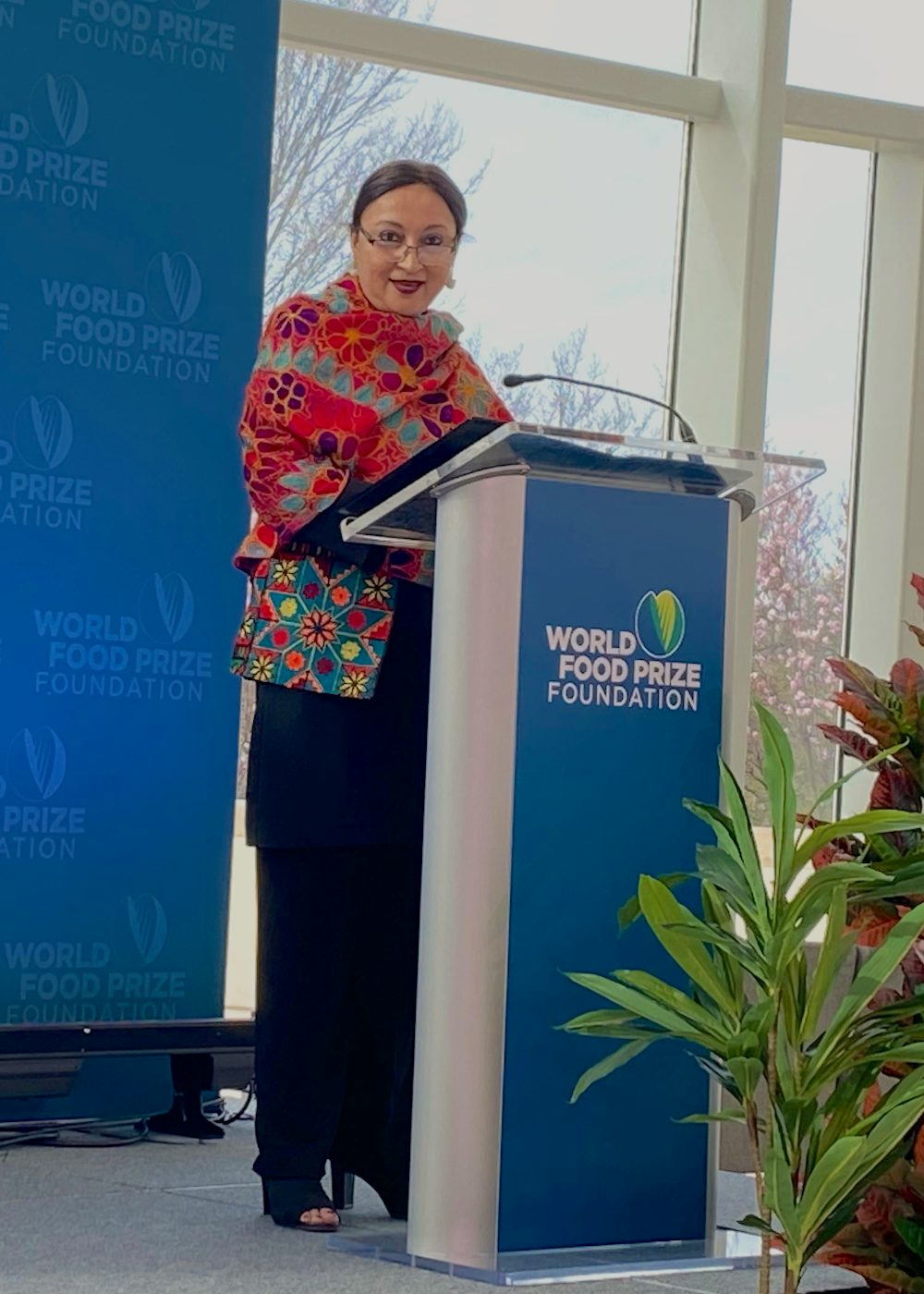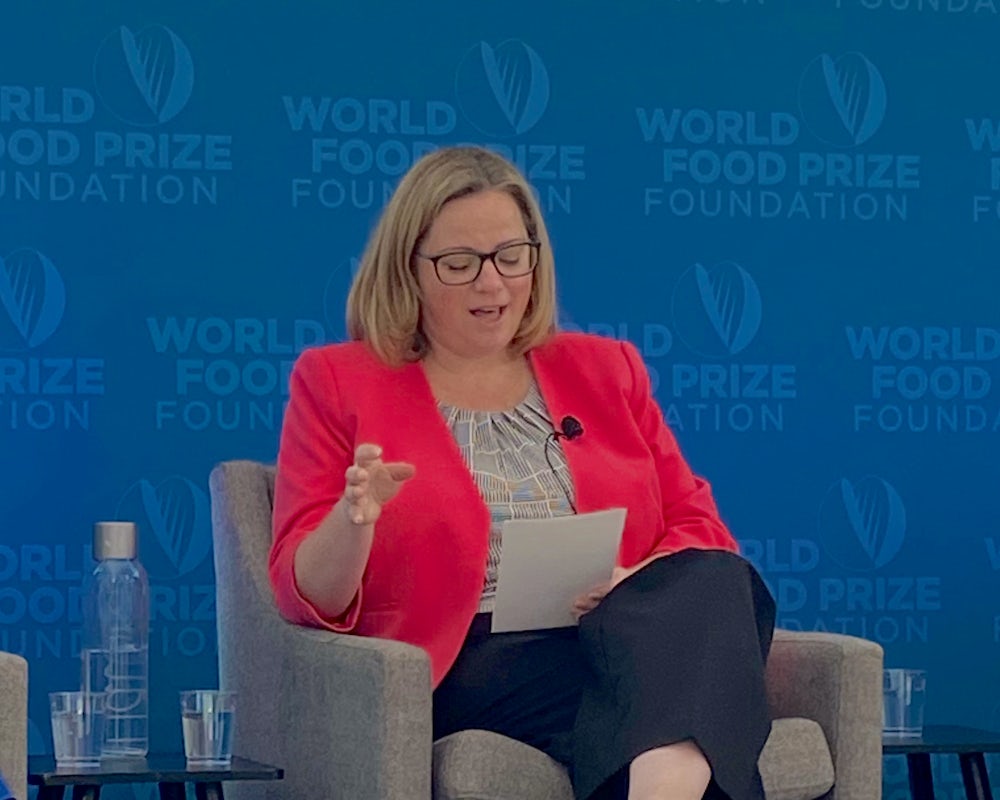On March 26, the World Food Prize Foundation convened a wide array of global food security stakeholders for the inaugural meeting in its new DialogueNEXT discussion series.
The meeting, held at the headquarters of the U.S. Institute of Peace in Washington D.C., focused on women driving growth and innovation in agriculture.
Heifer International representatives attended, eager to share forward-thinking ideas, learn from diverse perspectives and underscore a truth long championed by our organization: when women prosper, so does humanity.

The conference opened with a speech from Mashal Husain, chief operating officer of the World Food Prize Foundation, who focused on advancing discussions in global agriculture, with a particular emphasis on the indispensable role of women in the sector.
“Today, we continue our legacy by amplifying the voices of women in agriculture and driving positive change in our global food systems,” she said. “After all, agriculture offers one of the most promising roots for promoting understanding and building linkages across national, political, religious and ethnic differences.”
Jose W. Fernandez, undersecretary for Economic Growth, Energy and the Environment at the U.S. Department of State, built on this momentum by emphasizing America’s pledge to promote a food-secure future.
He presented U.S. endeavors to increase agricultural innovation and back initiatives such as the dedication of the International Year of the Woman Farmer at the United Nations, which will aim to strengthen women’s involvement and influence in agriculture.
“But we need to do more,” he said. “We also need to call attention to the imperative for sweeping reforms in food systems to support a burgeoning global populace,” noting that our food systems demand massive change to feed a global population of more than 10 billion people by 2050. By then, he said, we will need as much as 50 percent more food than we grow today.
“Women’s lack of access [to tools and inputs] undermines global food security. So, achieving a food-secure future for all requires investments in healthy soils, resilient seeds and agricultural technology — especially for women farmers,” he added.
Initially proposed by Jennifer Lester Moffitt, undersecretary for Marketing and Regulatory Programs at the U.S. Department of Agriculture, the initiative for the International Year of the Woman Farmer marks the first time in history the U.S. Mission to the United Nations is sponsoring an international year of this nature.
Efforts are currently underway to pass a resolution at the U.N. General Assembly to officially recognize 2026 as the International Year of the Woman Farmer.

If adopted, the 2026 launch date aims to provide ample time to build momentum and allow key stakeholders — including the Food and Agriculture Organization, nongovernmental organizations, the private sector and U.N. member states — to craft practical objectives surrounding the observance.
“[International Year of the Woman Farmer] isn’t just about elevating the role of women farmers but also developing concrete deliverables that we can act on collectively,” Moffitt said, advocating for a strategy that moves beyond recognition of women farmers to include actionable steps that improve women’s access to resources, education and technology in agriculture.
Moffitt noted that for this initiative to have real-world results, it will require solid data to help countries set specific goals. Additionally, to bring about widespread transformation, the initiative will need clear policies that consider gender equality throughout the entire food system.
Subsequent panelists reaffirmed a similar consensus that supporting women in agriculture is not just a matter of fairness but a necessity for combating global hunger and achieving food security, as well as many other Sustainable Development Goals (SDGs).
Speakers called for broadened access to resources and education for women as well as improved policies and programming to dismantle gender biases impeding women’s progress within agrifood systems.

“Forty-five million fewer people would not be hungry if women had just the same access to resources as men in the agrifood system,” said Dina Esposito, assistant to the administrator for the Bureau for Resilience, Environment and Food Security at USAID and Feed the Future deputy coordinator for development.
“If you’re not designing with women, for women, you risk promoting technologies that are either irrelevant or unprofitable, and you risk increasing the gender productivity gap between men and women,” she said.
Heifer International’s long-standing mission echoes through these discussions, demonstrating that gender equality in agriculture results in profound community benefits. As we strive toward a sustainable future, we recognize that a multisector approach is nonnegotiable for a world where gender equality transcends aspiration and becomes reality.
